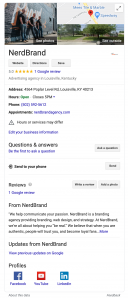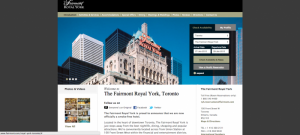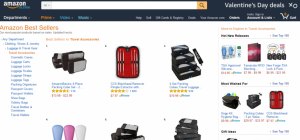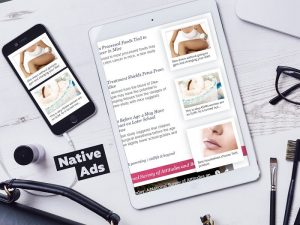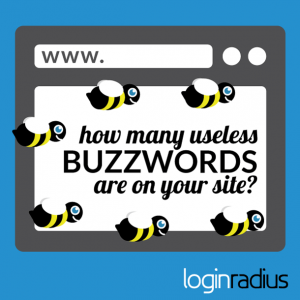— August 2, 2017
Getting better results from outbound sales is what we have been about since we started as a company. We are always looking for new ways to optimize our campaigns and help our customers achieve awesome results, so it should come as no surprise that we have been looking for better information about when is the best time to send email campaigns.
Of course, it isn’t just us. Salespeople and marketers have been trying to nail the best time to send emails with limited success (Tuesdays are the best!). While well intentioned, these efforts haven’t been able to get specific enough to have a great effect. It is simply because no one has ever tried to connect reliable data on email delivery with demographic data about the recipients of the email. After all, different groups have different habits. Would you expect a startup founder to be receptive to emails at the same time as the CEO of a Fortune 500 company?

We have been able to leverage our data to find the best time to send email campaigns
In this post:
-
Why a message can be twice as likely to convert purely depending on when you send it
-
5 reasons why optimizing your email’s send time will help your emails convert
-
What you should do to find the best time to send email campaigns
Growbots is in a unique position. On the one hand, we provide our customers with a dataset of highly targeted leads. This data includes information like the job title of your prospect along with the size, age, location, and vertical of the company targeted. The other half of our product is a cold email automation tool which our customers use to automatically send out their cold email campaigns at times they specify.
Using AI, we are then able to identify which of the responses they get are successful. There have been over 1,000,000 cold email campaigns sent using our platform which makes for a ton of data covering the best times to contact different segments. Of course, all of this data is difficult to make actionable on its own.
For that reason, our data science team built a machine learning model to determine the best time to send emails to a particular segment. Using this tool, it is really easy to input the segment you want to target and see what time you are most likely to get a response. Why does this make a difference?
Let’s look at the example of a CEO of a small technology company in San Francisco. If you send your campaign to this segment on Tuesday at 7:15 AM, you will only get a 3.7 percent conversion rate on average. That makes sense as your prospect will probably be cleaning out all of their emails from the night before and yours will get lost in the shuffle. But if you just wait a few hours until 11:45 AM on Tuesday, you’ll get a 6.8% conversion rate on average.
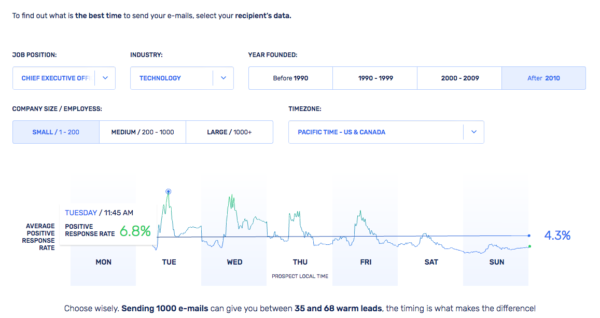
A message can be twice as likely to convert purely depending on when you send it.
Doubling your conversion rate has serious knock-on effects and can effectively double the revenue you generate from your outbound pipeline, all because of timing.

So see for yourself when the best time to send emails is. Simply put your prospect’s demographic information into the tool. The information you get could be the key to getting more positive responses from your emails.
To show you the impact your prospect’s demographics can have on the best time to send them an email campaign, we have looked at a couple of examples to see how optimizing sending time can be helpful. From that we came up with 6 reasons doing this will help you convert more emails.
5 reasons why finding the best time to send email campaigns will help your emails convert
While the one example I gave above can illustrate our point, it is still an anecdote. A more thorough study would provide better information about how optimizing email send times would be useful. To do this, we did two different studies to see how changing a variable can affect the best time to convert an email.
Our Method
For both of these studies we used these baseline criteria:
A small (<200 employees) company founded after 2010
To make sure the results weren’t localized to a specific area, industry or profession, we looked at the popular searches on our platform. From this we developed a list of 6 time zones (US West Coast, US East Coast, UK, Continental Europe, India, and Japan/Korea), three verticals (technology, corporate services, transportation), and job titles (CEO, VP Marketing, Head of HR) which we got conversion data for.
For each of these combinations, we first looked at what happened if you took that baseline company and changed the age of the company. We then took the baseline and saw what happened when you changed the size of the company.
What we wanted to see is how much the information in our email sending time optimizer could help you convert. In other words, how much of a difference picking the right time would make over picking randomly (the average for the week). From these studies, we found these 6 insights:
1. You can almost double your conversion rate, just by optimizing your send time.
Let’s say you are starting out with cold email and are just getting by with a 2.5% conversion rate. On average we found that when we looked at companies of all different ages there was an average 2.8% bump from sending your messages at the right time. And when we looked at companies of all sizes, we saw an average bump of 2.4%. What that means is that you could bump your 2.5% conversion rate to around 5%, just by optimizing send time.
And of course, that is the average. Certain buy personas see a much bigger swing. Take the 5.8% bump you see here:
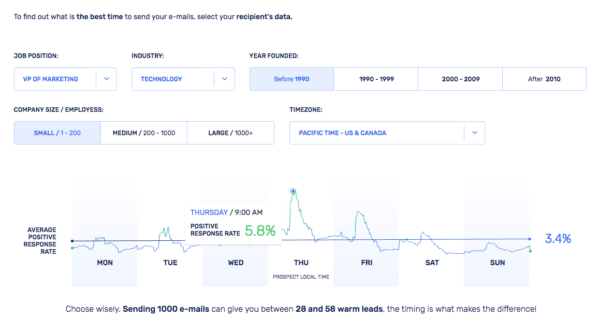
By sending your message at 9 AM on a Thursday, you boost your conversion rate by 70% over the average. This has a big impact of your outbound pipeline. Since conversion comes at the beginning of your pipeline, it doubling it can effectively double the revenues you get.
2. The size of your prospect’s company has a big impact on conversion
The way your prospects treat your message is often down to the way their company works and smaller companies work differently than larger companies. This can be in how they innovate or the experience of what it’s like to work there. So it will come as no surprise that the size of a company can affect the way people work, meaning that it can also determine when they respond to emails.
Let’s take our baseline example:
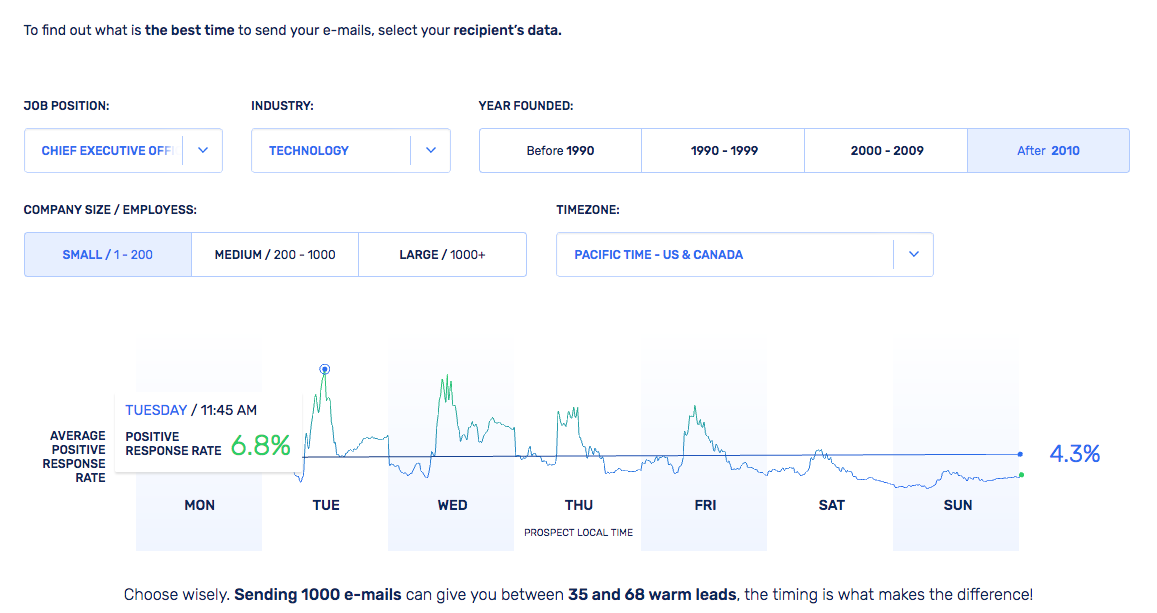
And make it a medium sized company:
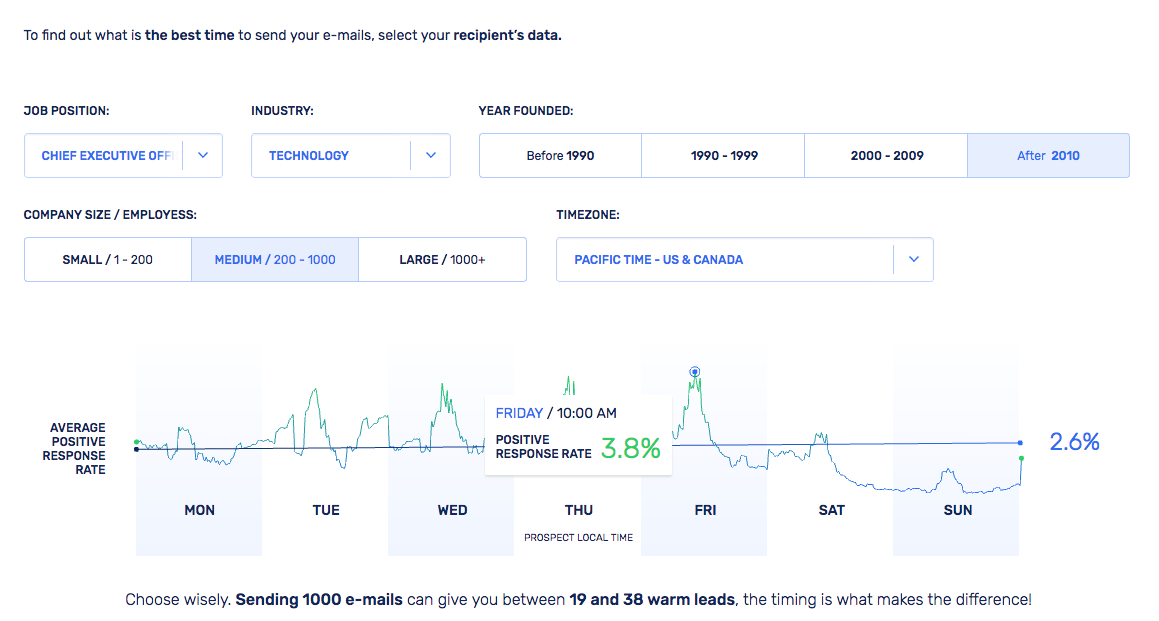
Two things jump out. The first is that you generally see lower conversion from a larger company but the more important difference is that your message has the best chance of converting three days later. In fact, if you optimized you campaign for a small company and then used that same sending time for a medium company, you would only have a 3.1% chance of converting only .4% better than average.
On the flip side, if you optimize for the medium sized company, you do a bit better but lose 1% off your conversion rate.
3. Almost nobody has their best day on Monday or Tuesday but you should still send emails on those days
As you can see from this chart of the study we did based on company age, none of the prospects we studied would be best contacted on Monday. Tuesday was only slightly better with only slightly over 3% of the days.
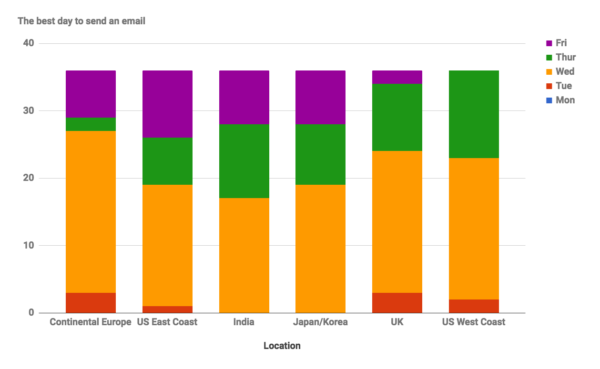
So does that mean you should never send an email out on Monday or Tuesday? Of course not. When you are presented with this prospect you certainly should:
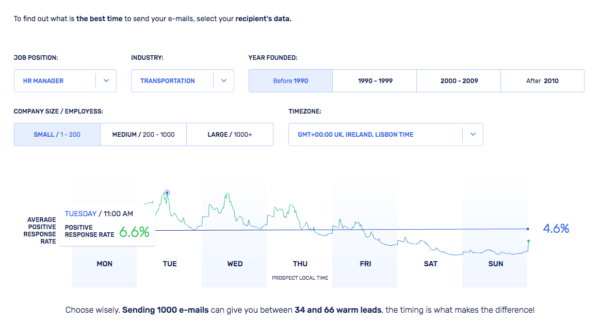
The point is that there is no such thing as the best day or the worst day to send out cold emails. There is only the day which is perfect for your prospect.
4. Small changes to the size of a company can mean a 9-hour difference between the time of day you should send your email campaign
Even if you optimize the day that you send your email, people are creatures of habit and do things at the same time every day, right? Not really. This is true in a lot of cases we found but we also found this prospect:
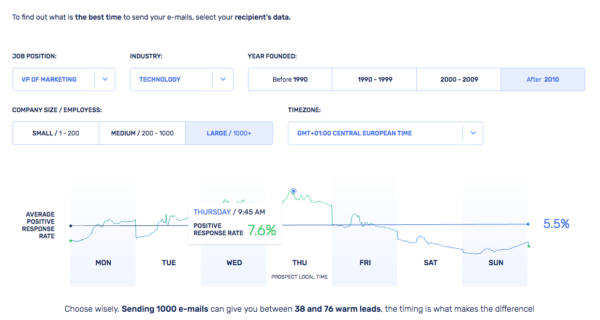
For this first prospect, it is best to contact them at 9:45 am but if you just make the company medium sized you get this:
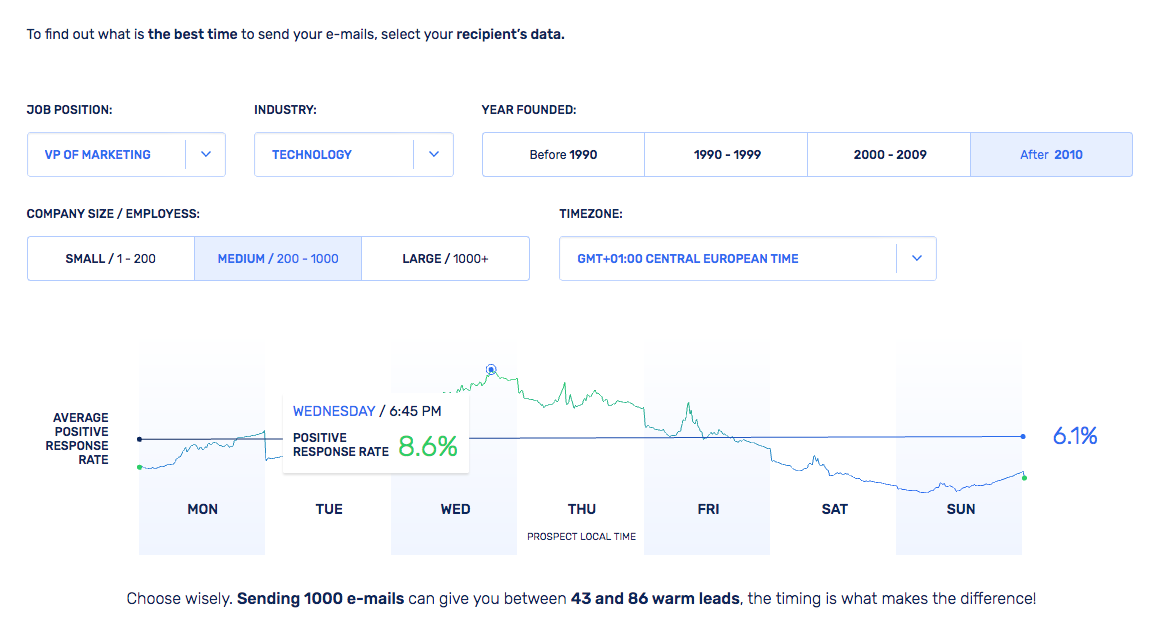
The best time to email this second prospect is 9 hours later in the day. The point here is that there are no criteria to small to optimize since one little change can make a big difference.
5. The benefit you see from optimizing the time you send your email changes depending on your target
It is important to be realistic about the benefits you can get for optimization. They tend to change based on targeting so we found that we got the biggest benefit targeting the Japanese market (3.2% on average) when studying the age of the prospect’s company while it was continental Europe that got the biggest bump (2.6% on average) when we studied size.
You can see that optimizing for different criteria will get you a different average bump to your conversion rate.

The point is that you will get different results depending on who you are targeting. That said, it’s always important to optimize the time of your emails as there is almost always a benefit.
What to do now
We would be the first to admit that these findings are outliers of a couple rather limited studies so how can they provide value for you? The point of these is not to explain trends that you should take as gospel when timing your emails. Instead, we want to emphasize that every situation can be different.
This used to pose a problem in the past. After all, the best data out there wasn’t segmented, severely reducing its actionability. Now, you can find the best time to send an email based on your target persona. It is an incredibly easy and free way to get more positive responses to your email campaigns.
Digital & Social Articles on Business 2 Community
(53)

